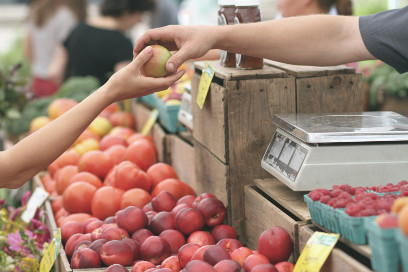Reducing Food Insecurity
How can a visit to the doctor reduce food insecurity?

Food insecurity is not being able to access, or not having enough affordable, nutritious food.
Imagine a visit to your healthcare provider where you leave with a prescription for food, not just medicine. According to the USDA, in 2019 nearly 11% of households in the United States were food insecure. In households with children, this number is closer to 14%. This means that at times during the year, these households were unable to acquire, or couldn’t reliably acquire, enough food to meet the needs of all members of their families because they did not have enough money or resources for food.
Many factors contribute to food insecurity including the cost of food, an unexpected bill or medical emergency, employment, even the number of grocery or convenience stores located in your neighborhood. Food insecurity can cause serious health complications when people have to choose between their medical care and having food on the table.
Like families across the country, many Sacramento families rely on inexpensive, processed foods for their meals due to the unavailability of affordable healthy foods in their communities. Providing financial nutrition incentives to families can help increase purchasing and consumption of healthy foods, and ultimately improve health. We engage in evaluation of programs and policies built on the understanding that food is medicine, to better demonstrate the connection between food insecurity and health.
Food is Medicine
 Healthcare providers know that nutrition is essential to health. Produce prescription programs allow medical professionals to prescribe fresh fruit and vegetables to patients experiencing diet-related chronic illness such as diabetes.
Healthcare providers know that nutrition is essential to health. Produce prescription programs allow medical professionals to prescribe fresh fruit and vegetables to patients experiencing diet-related chronic illness such as diabetes.
Many of our underserved communities suffer disproportionately from obesity, diabetes, heart disease and asthma. This is a direct result of the food and nutrition insecurities these communities have faced for years.
To reduce food insecurity in our region, creative solutions are needed to increase access to healthy, affordable foods. We are interested in partnering with local food vendors and farmers as well as technology startups to find innovative ways to deliver healthy foods to more households with delivery apps or food pharmacies.

